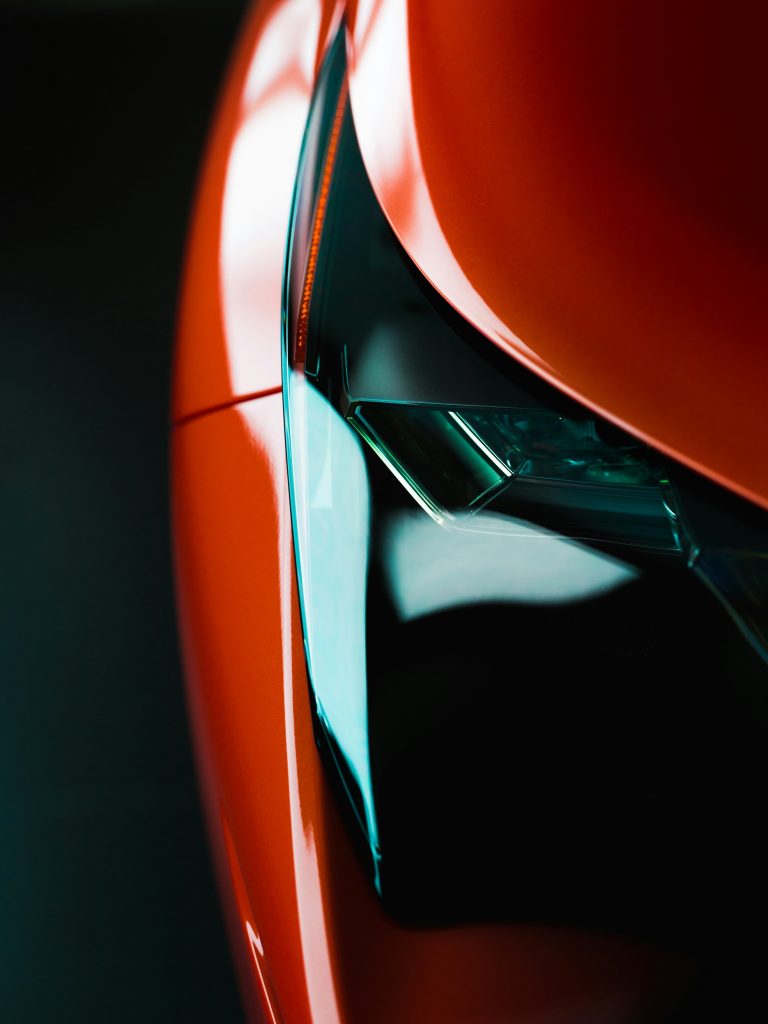Table of Contents
The Intersection of Car Design and Art: A Fusion of Engineering and Aesthetics
The evolution of car design is a fascinating narrative that intertwines engineering prowess with artistic expression. At its core, car design is a multifaceted discipline that bridges the gap between functionality and aesthetics, embodying the convergence of technology, culture, and art. Over the decades, this field has not only been about creating vehicles that move efficiently but also about crafting objects of beauty that evoke emotion, represent cultural ideals, and even challenge the boundaries of art itself.

Photo by Unsplash
The Foundations of Car Design: Engineering Meets Aesthetics
Car design begins with the essential requirement of functionality. A vehicle must perform reliably, safely, and efficiently. This need for technical precision has historically anchored car design within the domain of engineering. However, as the automobile became more than just a mode of transport—transforming into a symbol of status, freedom, and personal identity—the need for aesthetic appeal became increasingly important.
From the earliest days of motoring, cars were designed with a clear aesthetic purpose. The luxury carriages of the late 19th and early 20th centuries, such as those produced by Rolls-Royce or Bugatti, were often bespoke creations, with handcrafted bodies that reflected the tastes and status of their owners. These vehicles were not just mechanical devices but works of art, embodying the craftsmanship and artistic vision of their makers.
The transition from purely functional design to a blend of art and utility can be seen in the evolution of car body styles. Early designs were influenced by the shapes and forms of horse-drawn carriages. As technology advanced, however, designers began to experiment with more streamlined forms, influenced by the emerging field of aerodynamics. The 1930s saw the birth of the “streamline moderne” style, epitomized by cars like the Chrysler Airflow, which sought to marry aerodynamic efficiency with a futuristic, visually striking form.
The Golden Age of Car Design: Post-War Flourish
The post-World War II era is often considered the golden age of car design, a period when the automobile truly became an art form. In the 1950s and 1960s, designers had unprecedented freedom to explore new ideas and push the boundaries of what a car could be. This era gave birth to some of the most iconic and beautiful cars ever made, many of which are now considered masterpieces of industrial design.
During this time, car design was heavily influenced by contemporary art and culture. The flowing, organic forms of cars like the Jaguar E-Type and the Chevrolet Corvette reflected the optimism and exuberance of the post-war era. Designers drew inspiration from a wide range of sources, including aviation, space exploration, and modern art. The influence of artists like Piet Mondrian and Jackson Pollock can be seen in the bold use of color and form in some car designs, while the futuristic visions of designers like Raymond Loewy and Giorgetto Giugiaro echoed the excitement of the Space Age.
The interplay between form and function became more pronounced, as designers sought to create cars that were not only beautiful but also efficient and practical. This balance is epitomized by the work of Italian design houses like Pininfarina and Bertone, whose creations for marques like Ferrari, Alfa Romeo, and Lamborghini are celebrated for their perfect fusion of engineering excellence and aesthetic beauty. The Ferrari 250 GTO, for example, is revered not only for its performance on the racetrack but also for its timeless, sculptural form.
Car Design as Cultural Expression
Car design has always been deeply intertwined with cultural expression. In many ways, cars are a reflection of the societies that produce them. They embody the values, aspirations, and even the anxieties of their time.
In America, for example, the car became a symbol of freedom and individuality, as seen in the vast, powerful designs of the 1950s and 1960s. The Cadillac Eldorado, with its towering tailfins and chrome-laden bodywork, epitomized the American Dream—a blend of technological prowess and unabashed opulence.
In contrast, European car design often reflected a different set of cultural values. The smaller, more economical cars produced in post-war Europe, such as the Volkswagen Beetle and the Citroën 2CV, were designed for practicality and efficiency, reflecting the continent’s focus on rebuilding and resourcefulness. Yet even within these constraints, designers managed to imbue their creations with charm and character, turning humble vehicles into icons of design.
Japanese car design, which began to gain international prominence in the 1970s and 1980s, introduced a new aesthetic to the world stage—one that emphasized simplicity, reliability, and efficiency. Cars like the Toyota Corolla and the Honda Civic were designed with a focus on functionality, but their clean, unpretentious lines also spoke to a broader cultural appreciation for minimalism and refinement.
The Avant-Garde in Car Design: Concept Cars and the Limits of Art
Perhaps the most overt intersection of car design and art can be found in the realm of concept cars. These are vehicles designed not for mass production but as expressions of a designer’s vision—experiments in form, technology, and the very concept of what a car can be.
Concept cars often push the boundaries of design, incorporating elements of sculpture, architecture, and even performance art. The Citroën DS, for example, was a revolutionary design when it was introduced in 1955, with its aerodynamic form and innovative technology. It has since been celebrated not only as a great car but as a piece of modern art.
In more recent years, concept cars have continued to explore the limits of design and technology. Vehicles like the BMW GINA, with its flexible, fabric-covered body, or the Lamborghini Terzo Millennio, which imagines a future of self-healing, electrified supercars, challenge our preconceptions of what a car can be. These designs are as much about provoking thought and inspiring future possibilities as they are about the practicalities of automotive engineering.
The Car as a Work of Art
In conclusion, car design occupies a unique space at the intersection of engineering and art. It is a discipline that demands technical precision and innovation, yet it also allows for creative expression and cultural commentary. Throughout the history of the automobile, designers have continually pushed the boundaries of what a car can be, turning functional objects into works of art that capture the spirit of their times. As technology continues to evolve, and as our relationship with the automobile changes, the role of car design as a form of artistic expression will undoubtedly continue to grow, offering new ways to explore the relationship between form, function, and the human experience.


No responses yet